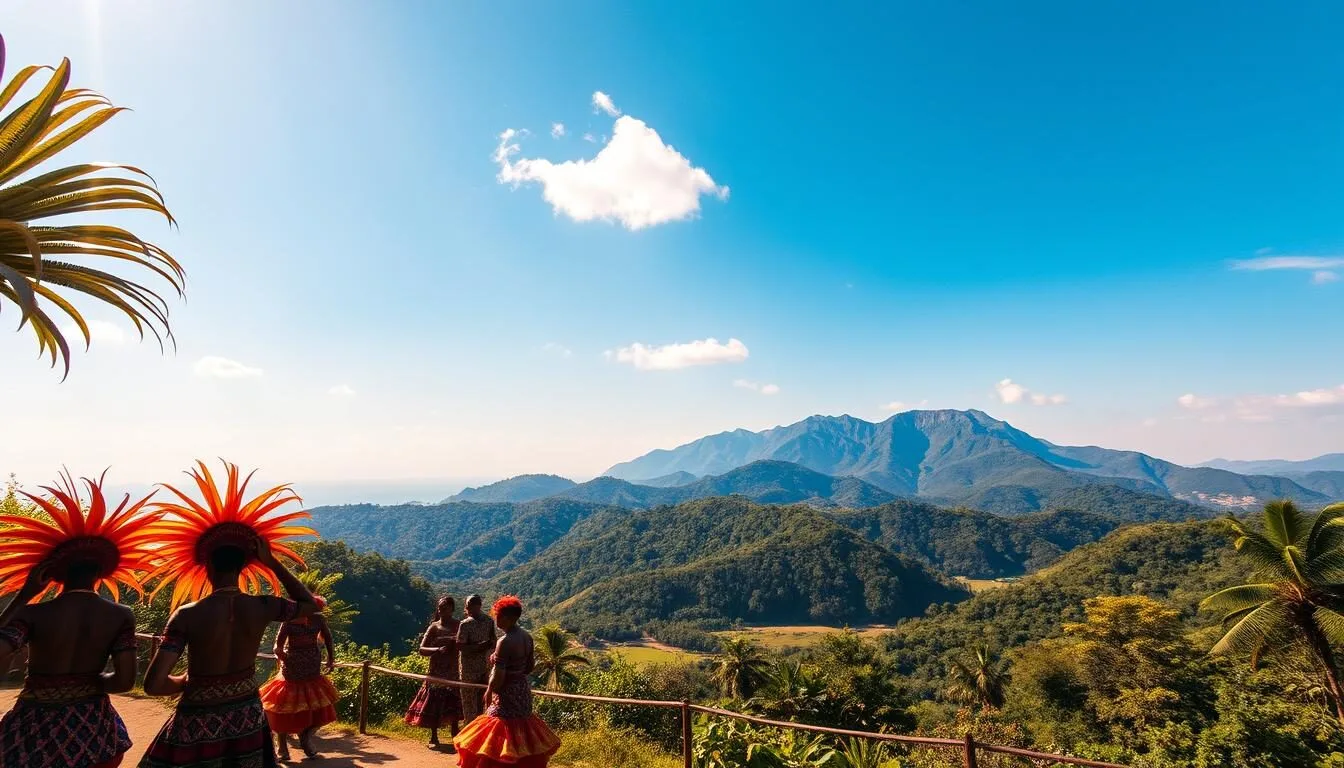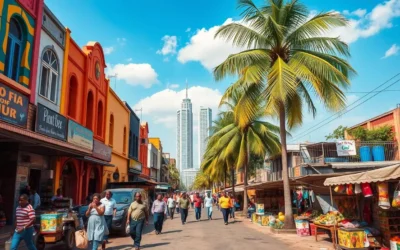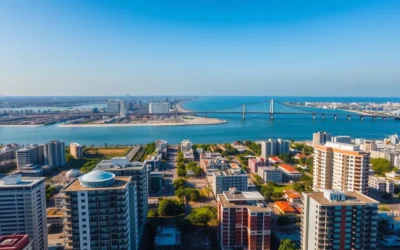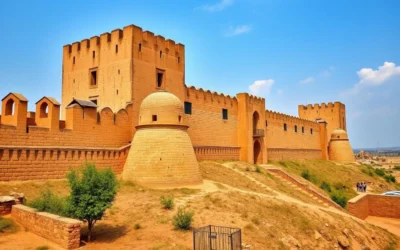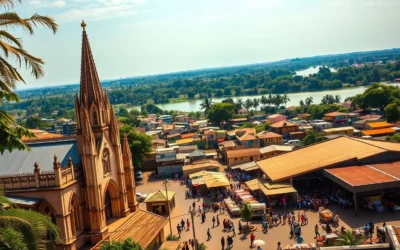✓ Accommodations✓ Flights✓ Rental Cars
Imagine a city where rich history meets breathtaking natural beauty, and vibrant culture is always alive. Welcome to Calabar, a tourist’s paradise in the Niger Delta region.
With its nickname “the people’s Paradise,” Cross River state is a must-visit destination for travelers. The old section of the city is home to historical landmarks like the Sea Port, Dukes Town church, and Mary Slessor’s house, making it a fascinating spot for history buffs.
As you plan your vacation to this Nigerian city, you’ll find that there’s no shortage of exciting spots to explore. From serene waterfalls to wildlife sanctuaries, Calabar is a traveler’s dream come true.
Discovering Calabar: Nigeria’s Tourism Gem
As you step into Calabar, you’re not just visiting a city; you’re experiencing a rich tapestry of Nigerian heritage. Calabar, known as Akwa Akpa in the Efik language, is strategically located between the Calabar River and the Niger Delta, making it a significant historical and cultural hub.
The Historical Significance of Calabar
Calabar’s history is deeply rooted in its role as a major port city during colonial times. The city’s evolution into a modern tourism hub is a testament to its rich historical background. You’ll be fascinated by the city’s transformation under Governor Donald Duke, when Cross River State established itself as Nigeria’s premier tourism destination.
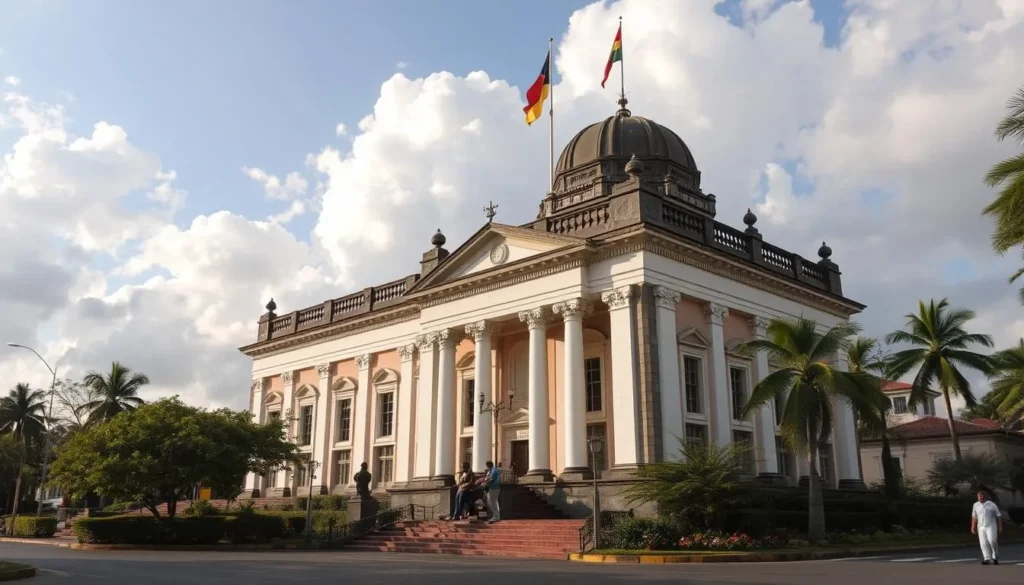
Best Time to Visit Calabar
The best time to visit Calabar is from December to February, when the weather is comfortable, and rainfall is minimal. This period allows you to fully experience the city’s cultural calendar, including the world-famous Calabar Carnival. Understanding the best time to visit helps you plan your trip to enjoy the capital city’s attractions without the hindrance of harsh weather conditions.

With its rich history, cultural significance, and comfortable visitation period, Calabar stands out as a tourist paradise. You can allocate a few days to explore the city’s attractions, immersing yourself in the local culture and history. Cross River State proudly calls itself “the people’s Paradise,” a reputation cultivated over time through its tourism-conscious governance.
Calabar, Nigeria: Best Things to Do – Top Picks for Nature Lovers
As you explore Calabar, you’ll discover a wealth of natural wonders that showcase the region’s incredible biodiversity. From lush national parks to breathtaking waterfalls, Calabar is a haven for nature enthusiasts.
Cross River National Park
Cross River National Park is a must-visit attraction in Calabar, boasting the most preserved tropical rainforest in West Africa. Spanning over 720 square kilometers, this park is a sanctuary for endangered species like drill monkeys, red foxes, and leopards.
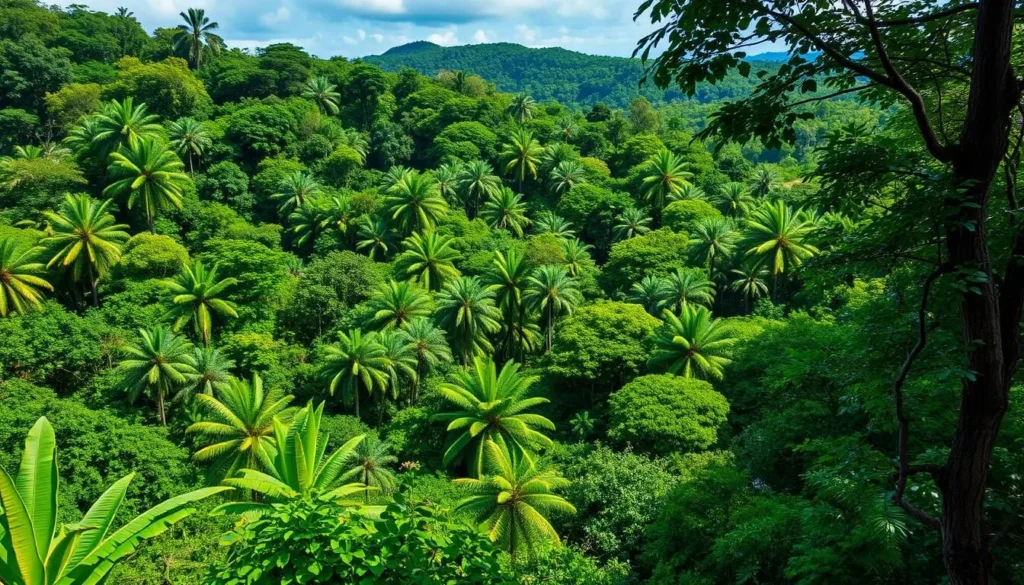
Agbokim Waterfalls
Located in Ikom Local Government Area, Agbokim Waterfalls is a breathtaking spectacle where seven different streams cascade over steep cliffs, forming a spectacular seven-faced waterfall. Visitors can enjoy comfortable vantage points to take in the beauty of this natural wonder.
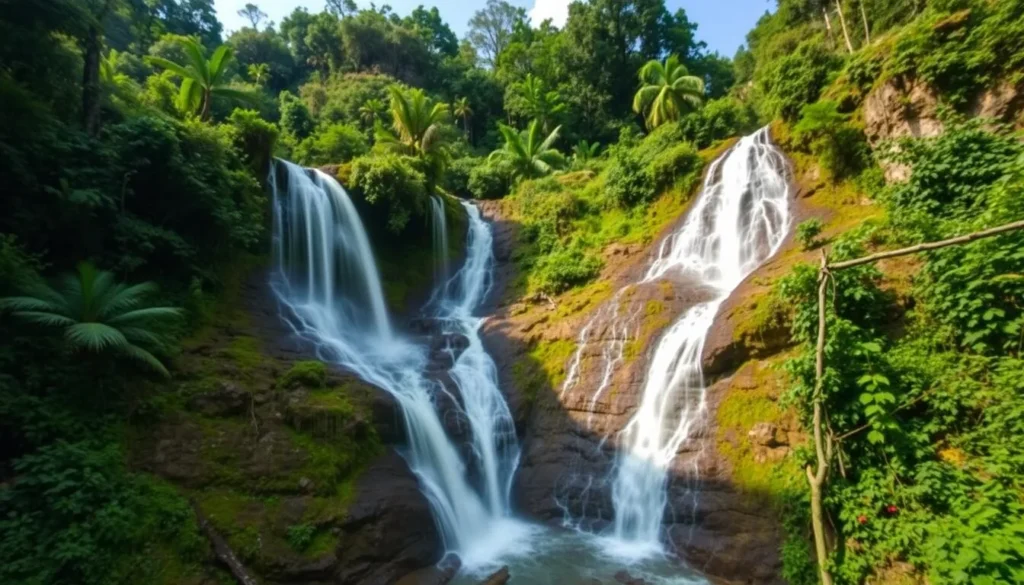
Kwa Falls
Kwa Falls, situated in the Oban division of Cross River National Park, is a tropical paradise characterized by a narrow gorge on the headwaters of the Kwa River. The natural spring water flows through ancient rocks and lush rainforest, forming a cloudy pool at the base.

These natural attractions offer perfect opportunities for hiking, photography, and connecting with Nigeria’s remarkable biodiversity. Whether you’re exploring the vast expanse of Cross River National Park or marveling at the beauty of Agbokim Waterfalls and Kwa Falls, Calabar is sure to leave a lasting impression on nature lovers.
Historical and Cultural Attractions in Calabar
If you’re looking for a glimpse into Nigeria’s past, Calabar’s historical sites are a must-see. Calabar is a city that is steeped in history and culture, offering a unique blend of traditional and colonial influences.
National Museum Calabar
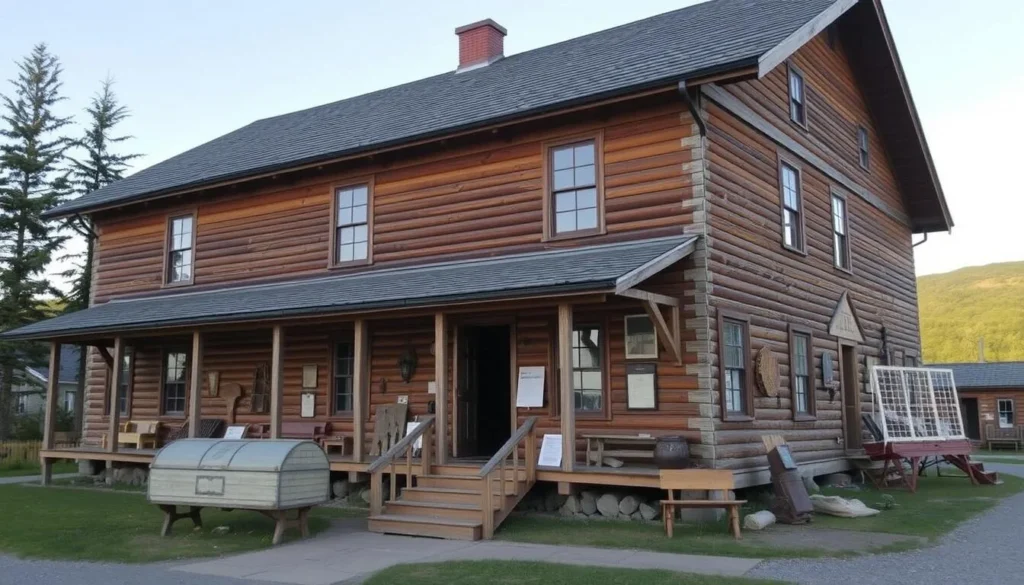
The National Museum Calabar is a significant historical site that showcases the city’s rich cultural heritage. The museum is housed in a former Government House built in the late 1800s, featuring old Scandinavian pine architecture. As you explore the museum, you’ll discover a wealth of artifacts, documents, and furnishings that provide insight into the Efik people’s history and the colonial administration.
Mary Slessor’s House
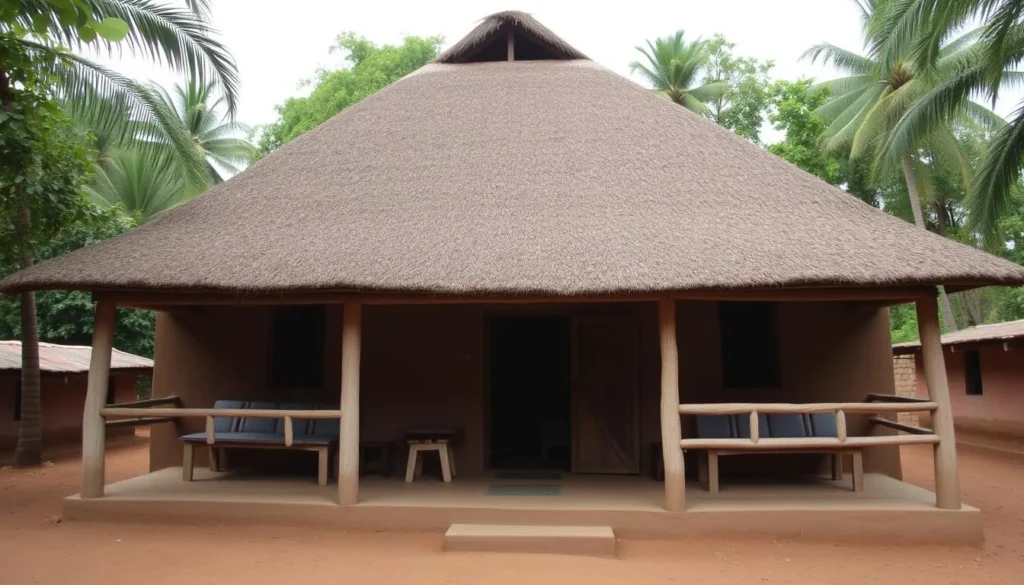
Mary Slessor’s House is a testament to the life and work of the Scottish missionary who fought against the killing of twins in Calabar. The house, built in 1876, is a simple mud structure with a verandah, affectionately called “Fine pass all” by the local villagers. As you visit the house, you’ll learn about Mary Slessor’s legacy and her contributions to the people of Calabar.
Duke Town Church
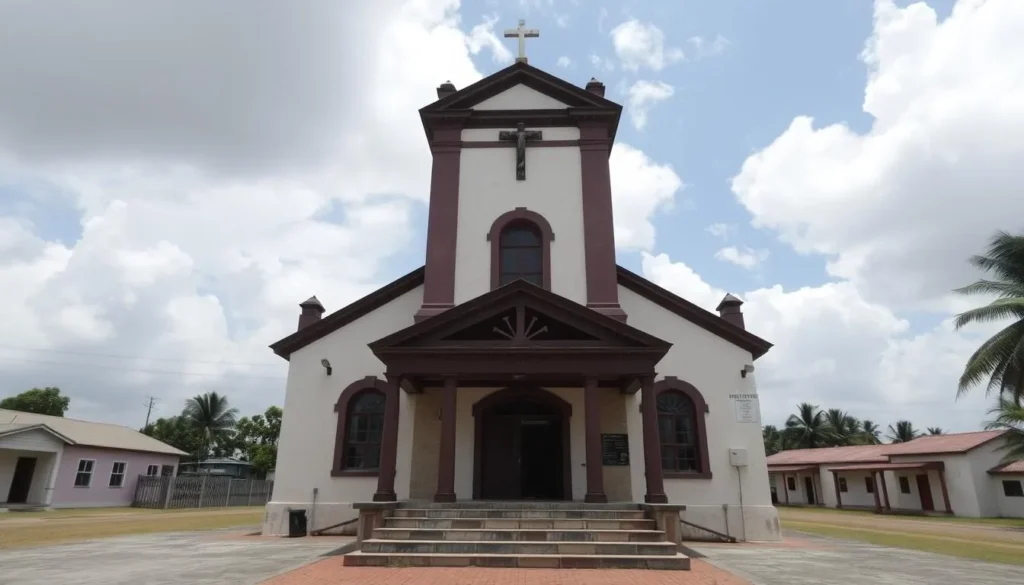
Duke Town Church is one of the oldest churches in Nigeria, built in the early 19th century under the administration of Reverend Hope Waddell, an Irish medical missionary. The church is a significant historical landmark that represents the introduction of Christianity to Calabar. As you explore the church, you’ll discover its rich history and cultural significance.
These historical and cultural attractions in Calabar offer a fascinating glimpse into the city’s rich heritage. By visiting these sites, you’ll gain a deeper understanding of the people, culture, and history of Calabar. Plan to spend several days exploring these attractions to fully appreciate their significance and the stories they tell about Calabar’s unique past.
Leisure and Entertainment in Calabar
Calabar is a city that knows how to have a good time, with numerous leisure and entertainment options. You can experience the best of what the city has to offer at various attractions and events throughout the year.
Tinapa Business and Leisure Resort
Tinapa Business and Leisure Resort is a premier destination for leisure and entertainment, located just 10km from Calabar city center. This integrated resort offers a wide range of facilities, including a luxury hotel, cinema, and water-themed park.
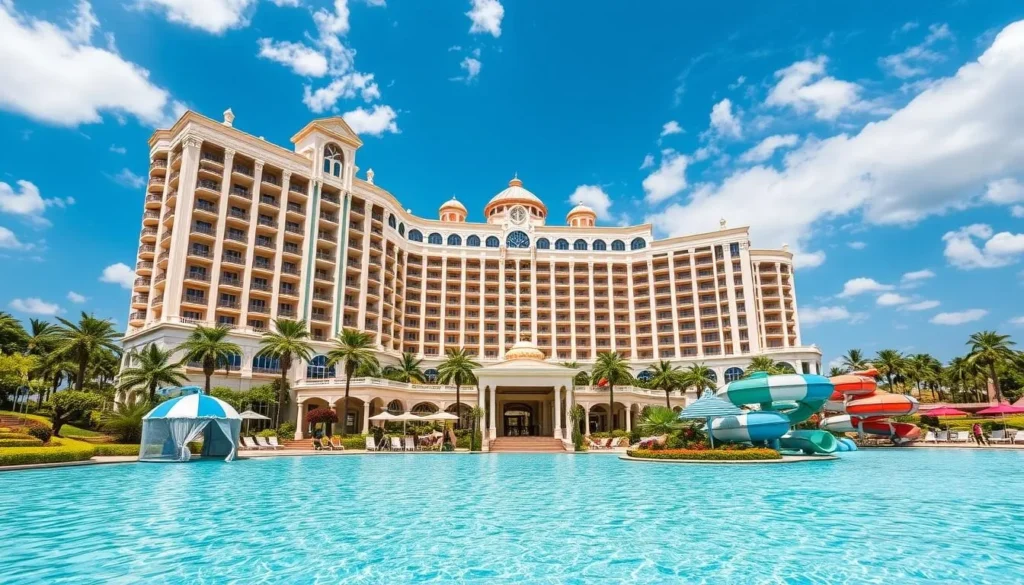
Calabar Carnival
The Calabar Carnival, tagged as “The Largest Street Party in Africa,” is a major event that takes place throughout December. You can enjoy colorful parades, boat regattas, fashion shows, and traditional dances during this period.
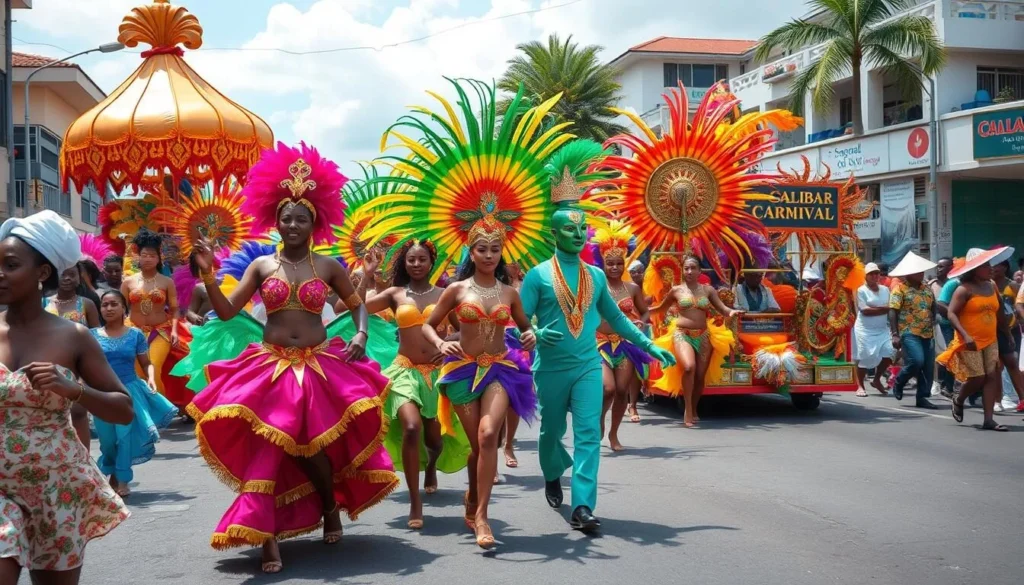
Drill Ranch Wildlife Sanctuary
For wildlife enthusiasts, the Drill Ranch Wildlife Sanctuary is a must-visit. Located about a 5-hour drive from Calabar, this conservation area is dedicated to rehabilitating and protecting endangered drill monkeys.

These attractions offer a perfect blend of leisure, entertainment, and wildlife experiences, showcasing why Calabar remains a top tourist destination in Nigeria.
Planning Your Perfect Trip to Calabar
To experience the best of Calabar, careful planning is essential to ensure a memorable trip. You’ll want to consider staying at the Obudu Mountain Resort, which offers a unique experience with its temperate climate and exotic wildlife.
Accommodation Options
Choose from a range of accommodations in Calabar city, from luxury hotels near Marina Resort to budget-friendly guesthouses in the local government area.
Local Transportation Tips
Navigate the city using local transportation, including taxis, motorcycle taxis (okadas), and minibuses, which provide affordable ways to reach attractions across Cross River State.
Must-Try Calabar Cuisine
Be sure to sample authentic Calabar cuisine, famous for its rich flavors, with must-try dishes including Edikang Ikong soup and Afang soup. With at least 5-7 days, you can properly experience both city attractions and natural wonders like Agbokim Waterfalls.
Plan your Calabar vacation carefully and enjoy the city’s vibrant atmosphere, rich history, and breathtaking natural beauty.
The above is subject to change.
Check back often to TRAVEL.COM for the latest travel tips and deals.
